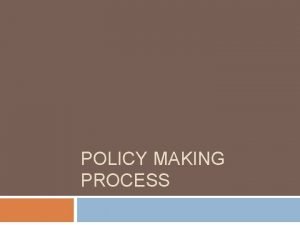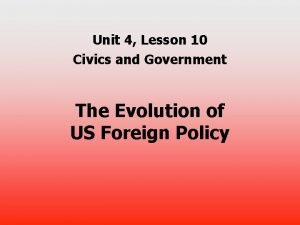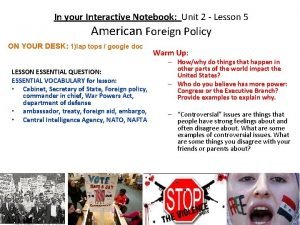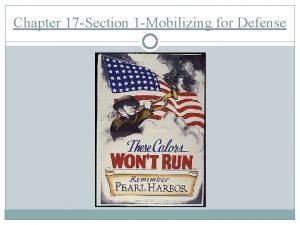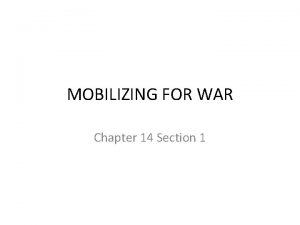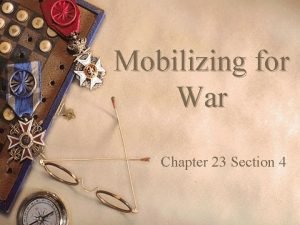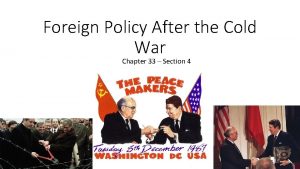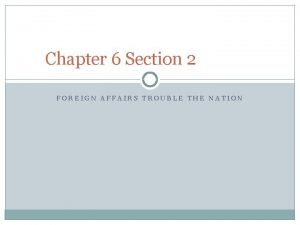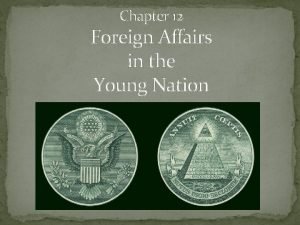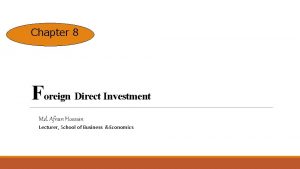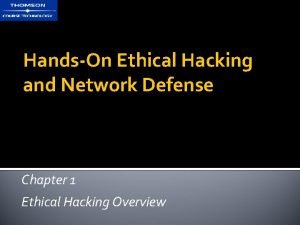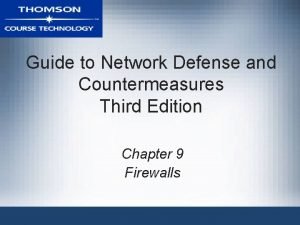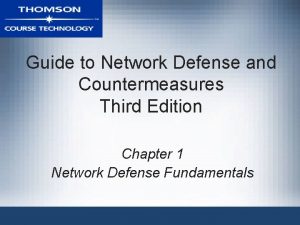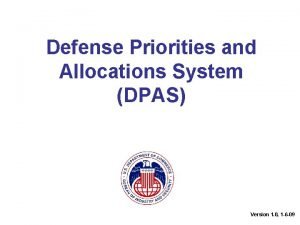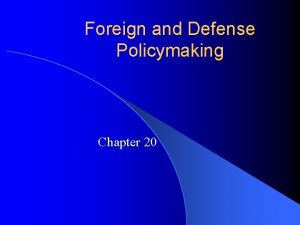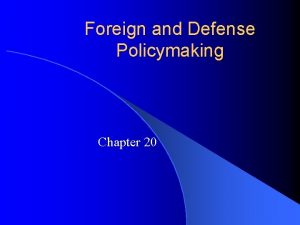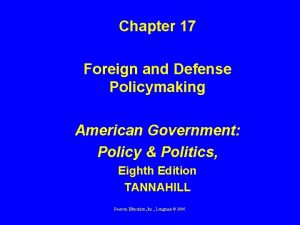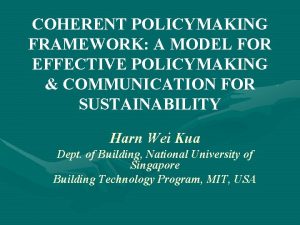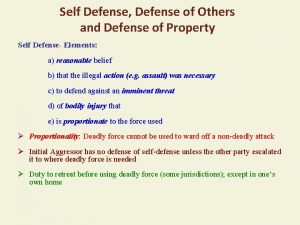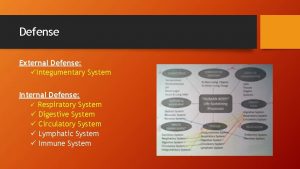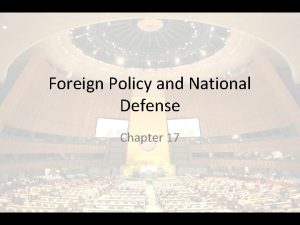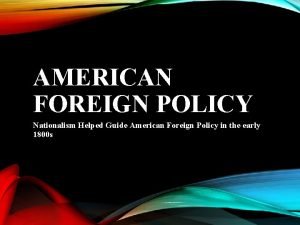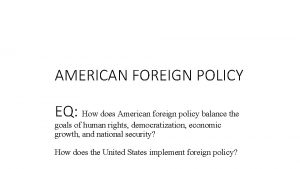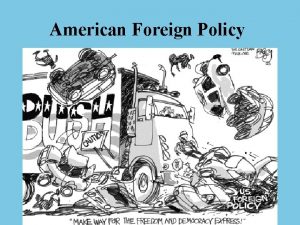Foreign and Defense Policymaking Chapter 20 American Foreign

















- Slides: 17

Foreign and Defense Policymaking Chapter 20

American Foreign Policy: Instruments, Actors, and Policymakers Instruments of Foreign Policy Military is most historical and still used Economic includes trade sanctions and MFN status Diplomatic is the quietest of the tools

American Foreign Policy: Instruments, Actors, and Policymakers Actors on the World Stage International Organizations Regional Organizations Multinational Corporations Nongovernmental Organizations Individuals

American Foreign Policy: Instruments, Actors, and Policymakers The Policymakers President Diplomats National Security Establishment Congress

The Cold War A “Two World” Paradigm Containment abroad and Anti-Communism at home Eisenhower warned of a Military/Industrial Complex: the cozy relationship between defense contractors and the military. The Vietnam War

Detente Détente: a slow transformation from conflict to cooperation. Strategic Arms Limitations Talks were an effort to limit the growth of nuclear arms. Originally détente applied to the Soviet Union, and then Nixon applied the approach to China.

The Reagan Rearmament The defense budget had been declining since the mid 1950’s. Reagan added some $32 billion to the defense budget in his first term in office to oppose the Soviet buildup. Strategic Defense Initiative: using computers and other equipment to create a missile shield to defend against Soviet missiles.

End of the Cold War The disintegration of the Soviet Union, which breaks into 15 states Russia is the largest Does Reagan deserve credit? Or was the Soviet system fatally flawed?

The Politics of Defense Policy Trends in Defense Spending

The New Global Agenda The immediate aftermath of the cold war led to a “peace dividend, ” which is the budgetary savings brought about by peace. Military might was not as important since fears of attacks had decreased.

The New Global Agenda Economic Sanctions grew in importance. Nonmilitary penalties are imposed on foreign countries as an attempt to modify their behavior. Sanctions can be effective, but critics argue they only hurt U. S. businesses and the poor and provoke a nationalist backlash.

Nuclear Proliferation Only a few countries have known nuclear weapon capabilities. The fear is that Iran and North Korea will have nuclear weapons capabilities and use them against their neighbors or the U. S. The New Global Agenda

The New Global Agenda Terrorism The most troublesome national security issue today Takes many forms and is difficult to defend against in an open society The threat of terrorism forces a trade off between safety and civil liberties

The New Global Agenda International Trade. Tariffs (a tax on imported goods) are used to protect American business. NAFTA and GATT are ways to lower tariffs and increase trade.

The New Global Agenda Exports and Imports

Globalization, Energy and the Environment In developing nations, the balance between economic development and the environment is tilted towards the economy.

Searching for Paradigm We face challenges from both state and non-state actors The Bush Doctrine returned to a two world paradigm with its emphasis on the “axis of evil” Does that paradigm work? What different paradigm would you suggest?
 What does the policy making process look like
What does the policy making process look like Nonspecific defense mechanisms
Nonspecific defense mechanisms Too foreign for here too foreign for home
Too foreign for here too foreign for home Unit 4 lesson 10 american foreign policy
Unit 4 lesson 10 american foreign policy Lesson 5: american foreign policy
Lesson 5: american foreign policy Chapter 17 section 1 mobilizing for defense answer key
Chapter 17 section 1 mobilizing for defense answer key Mobilizing for defense section 1
Mobilizing for defense section 1 Chapter 17 section 1 mobilizing for defense
Chapter 17 section 1 mobilizing for defense Chapter 33 section 4 foreign policy after the cold war
Chapter 33 section 4 foreign policy after the cold war Foreign affairs trouble the nation chapter 6 section 2
Foreign affairs trouble the nation chapter 6 section 2 Chapter 12 foreign affairs in the young nation
Chapter 12 foreign affairs in the young nation Afnan hossain
Afnan hossain Foreign affairs chapter 15
Foreign affairs chapter 15 Usw strike and defense fund
Usw strike and defense fund Ethical hacking and network defense
Ethical hacking and network defense Guide to network defense and countermeasures
Guide to network defense and countermeasures Guide to network defense and countermeasures
Guide to network defense and countermeasures Defense priority allocation system
Defense priority allocation system
